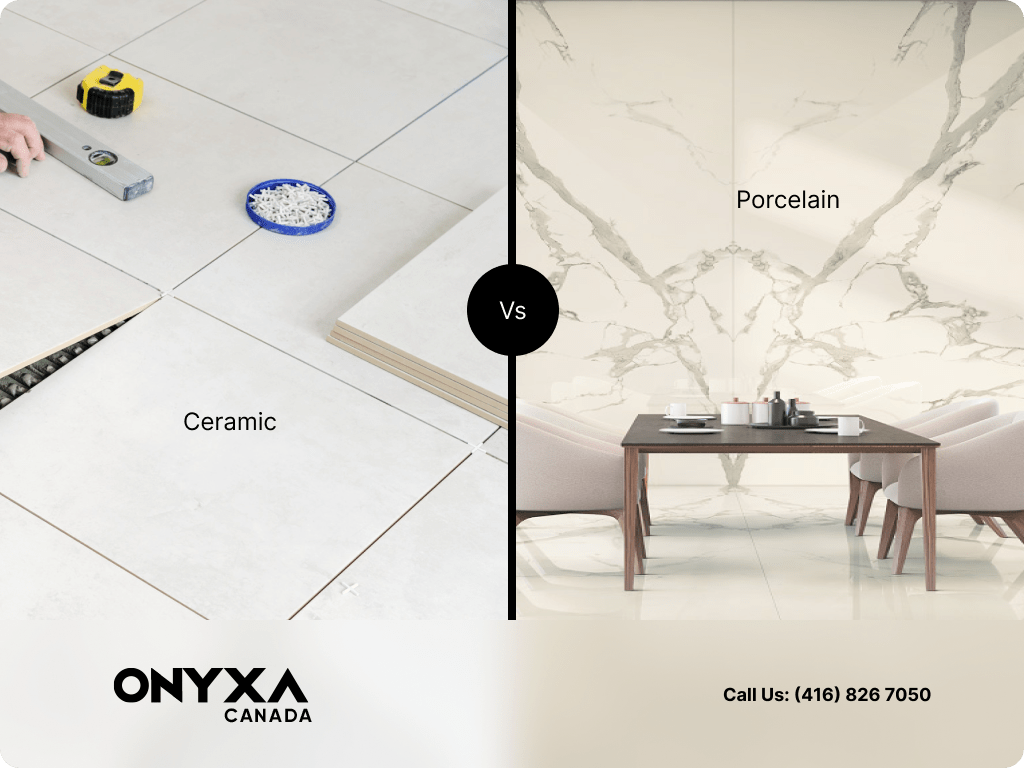Every time you want to renovate your house, it is a big dilemma to choose the fine products you need. When it comes to wall tiling and flooring, it is even more confusing to decide between porcelain and ceramic.
Porcelain or ceramic? That’s the million-dollar question. While you are browsing the online pages to select your favorite ones,you should know that it’s not just about checking the market and listing out the options. It’s about understanding the nitty-gritty details that make all the difference, and you will see many differences after installation. It is often a hard decision to make, and we are here to make it easier for you.
Overview of Porcelain Tiles
You may have heard of porcelain tile when it comes to kitchen and bathroom renovations. They are the first option and bring many advantages to your design. Home designers know it as a contemporary flooring choice and admire it for its strength and aesthetic appeal. Homeowners and designers alike appreciate the enduring qualities and diverse design options that porcelain tile brings to a space. Keep reading to learn more about the definition, composition, manufacturing process, benefits, applications, and maintenance aspects of porcelain tile!
Definition and Composition
Porcelain tile, a sophisticated flooring material, is crafted from a refined mixture of fine clay, minerals, and other natural elements. The result of this mixture is a wonderful appeal on your wall or your flooring. This carefully composed blend undergoes meticulous processing, resulting in tiles that exhibit remarkable strength and durability when exposed to high temperatures during the manufacturing process. Have you ever wondered how they are manufactured?
Manufacturing Process
The manufacturing of porcelain tile involves extracting and purifying raw materials, shaping them into tiles, and subjecting them to high-temperature kiln firing. When we say firing process, we are talking about reaching temperatures above 2300 degrees Fahrenheit, which transforms the materials into a dense and resilient surface. This final touch makes porcelain tile durable for high traffic areas such as kitchens. Well, we walk in the kitchen a lot!
Types of Porcelain Tile
Porcelain tile comes in various types, each tailored to specific needs. Have a look at the common variations listed below:
- Full-Body Porcelain Tile: Uniform in composition, this type maintains its color and pattern throughout the entire thickness and offers durability and versatility.
- Glazed Porcelain Tile: Featuring a protective glaze, this type adds an extra layer of resistance against stains and moisture. This makes it suitable for a range of applications.
Benefits of Porcelain Tile
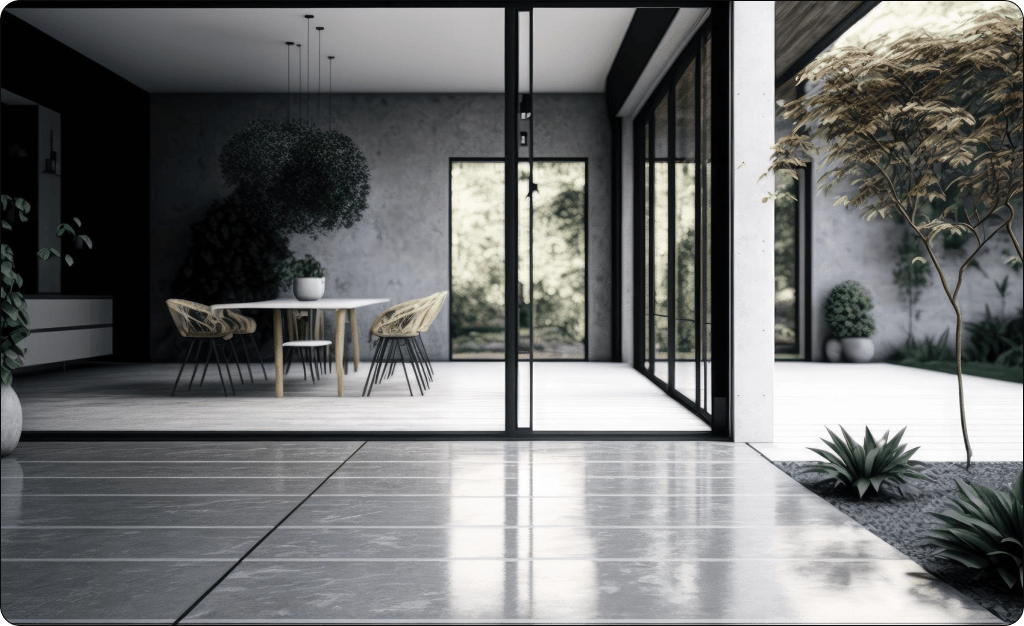
The popularity of porcelain tile is driven by several key advantages:
- Exceptional Durability: With its robust composition, porcelain tile excels at withstanding heavy traffic and impact, making it suitable for both residential and commercial spaces.
- Design Flexibility: Porcelain tile offers an extensive range of design options, including various colors, patterns, sizes, and finishes, allowing for customization to suit diverse styles.
- Water Resistance: Renowned for low water absorption rates, porcelain tile is an excellent choice for moisture-prone areas, such as bathrooms and kitchen countertops.
Popular Applications
Porcelain tile finds its application in diverse settings, including:
- Flooring: Whether in residential homes or commercial spaces, porcelain tile is one of the best tiles for flooring and provides a long-lasting and visually appealing solution.
- Outdoor Spaces: Porcelain tiles’ resistance to water absorption makes them ideal for outdoor areas, such as patios and walkways.
Maintenance and Care
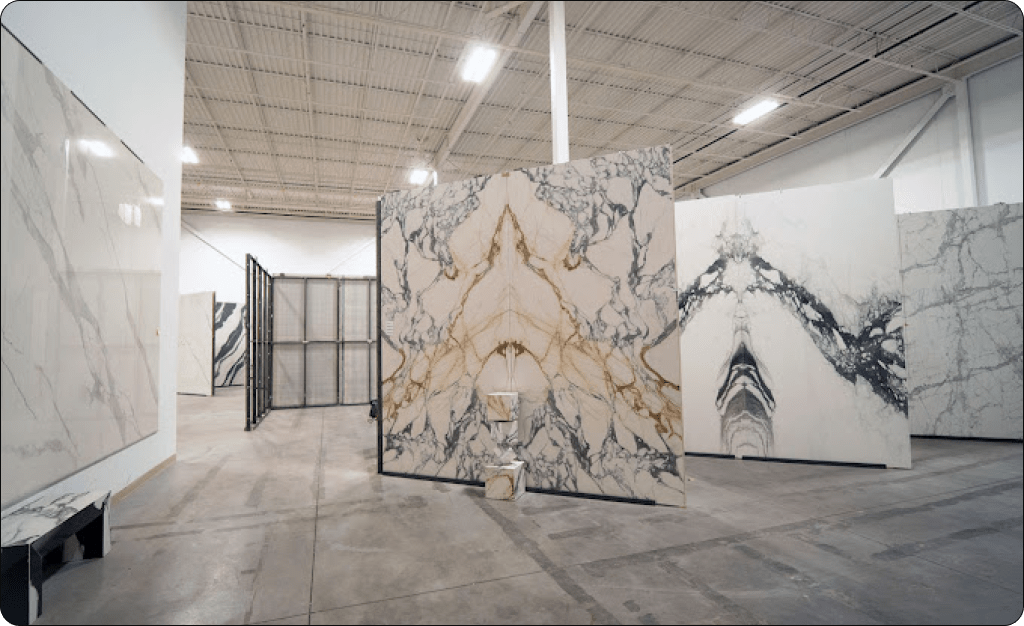
Preserving the allure and longevity of porcelain tile involves:
- Regular Cleaning: Employ a pH-neutral cleaner and a damp mop for routine maintenance, avoiding abrasive chemicals.
- Grout Care: Keep grout lines clean and well-sealed to prevent discoloration and moisture penetration.
- Stain Resistance: Porcelain tile’s inherent resistance to stains simplifies maintenance, with swift cleanup recommended for spills.
Cost and Investment
Porcelain tile costs are influenced by factors such as type and design complexity. They typically range between $30 and $120 per square foot, excluding installation costs. Given its durability and longevity, porcelain tile proves to be a valuable long-term investment, potentially offering cost savings over time.
Overview of Ceramic Tiles
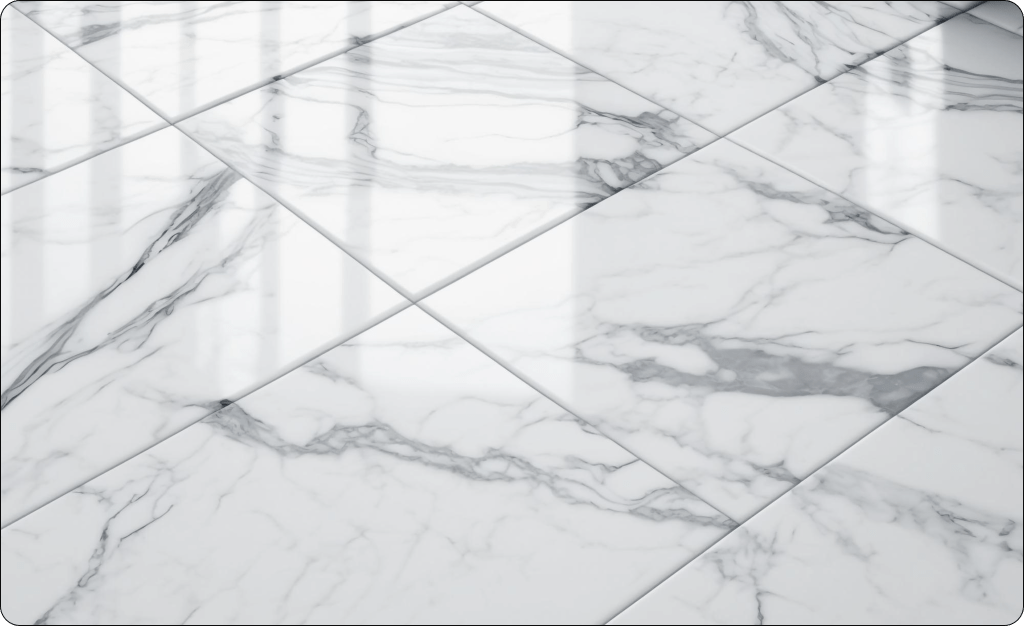
Ceramic tile is a standard and adaptable flooring option that has been loved for generations. It is famous for its charm, strength, and wide range of design options. Both designers and homeowners choose this kind of flooring as great home renovation tile choices. Now let’s explore ceramic tile’s definition, ingredients, production method, applications, and maintenance requirements!
Definition and Composition
The basic structure of ceramic tile is clay, water, minerals, and additions. Together, these components create tiles that, at high temperatures, provide a surface that is durable and strong.
Production Method
Ceramic tile manufacturing is a complex process that involves several steps. After being extracted and cleaned, the raw materials are combined to create tiles, which are then dried. Now that the tiles are dry, they are fired in a high-temperature kiln, usually at temperatures between 1900 and 2500 degrees Fahrenheit. The clay is transformed into a solid mass during this firing, giving the tile its renowned durability.
Types of Ceramic Tile
Ceramic tile comes in various types, each with unique characteristics. Among them are:
- Porcelain Ceramic Tile: Crafted from finer clay and fired at elevated temperatures, porcelain ceramic tile boasts density and resistance to water absorption, making it ideal for high-traffic areas.
- Glazed Ceramic Tile: With a layer of liquid glass on its surface, glazed ceramic tile not only gains a protective coating but also sports decorative elements, available in various colors and finishes.
- Quarry Tile: Fashioned from natural clay, quarry tile’s rustic appearance suits outdoor and commercial settings, thanks to its durability and slip resistance.
Benefits of Ceramic Tile
There are several reasons why ceramic tile is so popular:
- Durability: Ceramic tile withstands heavy foot traffic, resists scratches, and remains resilient in high-impact zones.
- Versatility in Design: An array of colors, patterns, sizes, and finishes provides limitless design possibilities, customizable to any style or aesthetic preference.
- Water Resistance: Especially true for porcelain ceramic tile, low water absorption rates make it ideal for moisture-exposed areas like bathrooms and kitchens.
- Easy Maintenance: Ceramic tile is comparatively easy to clean and maintain because to its stain-resistant glazed surfaces and regular sweeping and damp mopping.
Popular Applications
Ceramic tile finds its place in diverse residential and commercial settings, including:
- Backsplashes: A go-to choice for kitchens and bathrooms shower walls, ceramic tile serves as a visually appealing backsplash, protecting walls from water splashes and stains.
- Wall Accents: Whether on feature walls or around fireplaces, ceramic tile provides decorative accents, adding texture and visual allure to spaces.
Maintenance and Care
Preserving the beauty and functionality of ceramic tile involves:
- Regular Cleaning: Employ a pH-neutral cleaner and a damp mop for routine cleaning, steering clear of harsh chemicals that could damage the tile.
- Grout Maintenance: To prevent discoloration and moisture penetration, keep grout lines clean and sealed. Take quick care of any cracked or broken grout.
- Stain Prevention: Swiftly wipe up spills to prevent stains from setting, using mild cleaning solutions or specialized stain removers for stubborn stains.
Cost and Investment
Just like porcelain tiles, there are many other factors that influence the cost of ceramic tiles. The design complexity and uniqueness of the design play an important role in the pricing, and you should expect more expensive ones if your choice has a higher quality. You will see options starting at $15 per square foot.
Porcelain vs. Ceramic; A Full Comparison
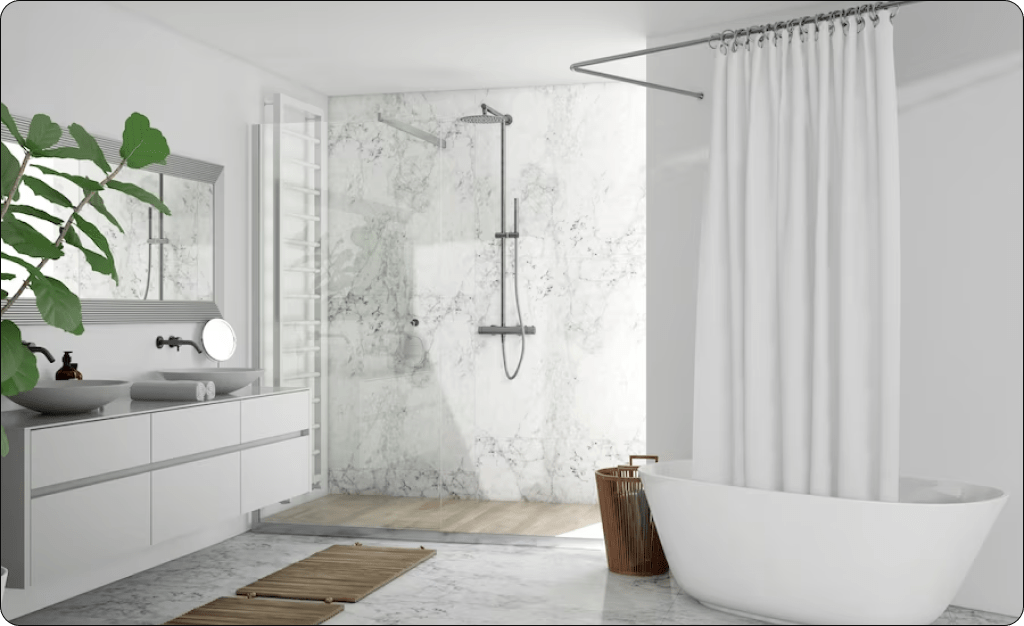
As homeowners and designers weigh the best tiles for flooring, a direct comparison between porcelain and ceramic tiles becomes crucial to making an informed choice. Both materials offer unique attributes, and understanding their differences in durability, maintenance, cost, aesthetics, and installation can guide decision-making.
Durability
- Porcelain Tile: Known for its toughness, porcelain excels in high-traffic areas and resists impact exceptionally well. It’s the go-to option for durability, making it suitable for both indoor and outdoor spaces.
- Ceramic Tile: While still durable, ceramic tiles may be more prone to chipping in high-impact zones. They’re ideal for spaces with normal wear and tear but may require a bit more care.
Maintenance
- Porcelain Tile: With low water absorption and natural stain resistance, porcelain is a breeze to maintain. Regular cleaning with a gentle cleaner and prompt spill cleanup keep it looking pristine.
- Ceramic Tile: Maintenance is straightforward, but ceramic tiles may need a bit more attention in stain-prone areas. Regular cleaning and grout maintenance keep them in top shape.
Benefits and Applications
Cost:
- Porcelain Tile: While slightly pricier upfront, the investment pays off in long-term durability, potentially saving costs over time.
- Ceramic Tile: Budget-friendly, ceramic tiles offer a cost-effective solution, particularly for DIY projects.
Aesthetic
- Porcelain Tile: Versatile and sophisticated, porcelain tiles come in various colors, patterns, sizes, and finishes, catering to diverse design preferences and styles.
- Ceramic Tile: Offering a broad range of design options, ceramic tiles provide decorative elements with various colors and finishes, suitable for both traditional and modern settings.
Applications in Your Space
- Porcelain Tile: Ideal for kitchens, bathrooms, and outdoor areas due to its resistance to moisture absorption and durability. Consider it for high-traffic zones where resilience is key.
- Ceramic Tile: Well-suited for spaces with moderate foot traffic, ceramic tiles are perfect for areas where a budget-friendly yet stylish solution is needed.
DIY Considerations
- Porcelain Tile: While durable, its density may make a challenge during installation. Professional help is recommended, but DIY enthusiasts with some experience may tackle it with care.
- Ceramic Tile: Lighter and easier to handle, ceramic tiles are more DIY-friendly. Installation may be manageable for those with basic skills, but professional assistance ensures optimal results.
Use Cases and Recommendations
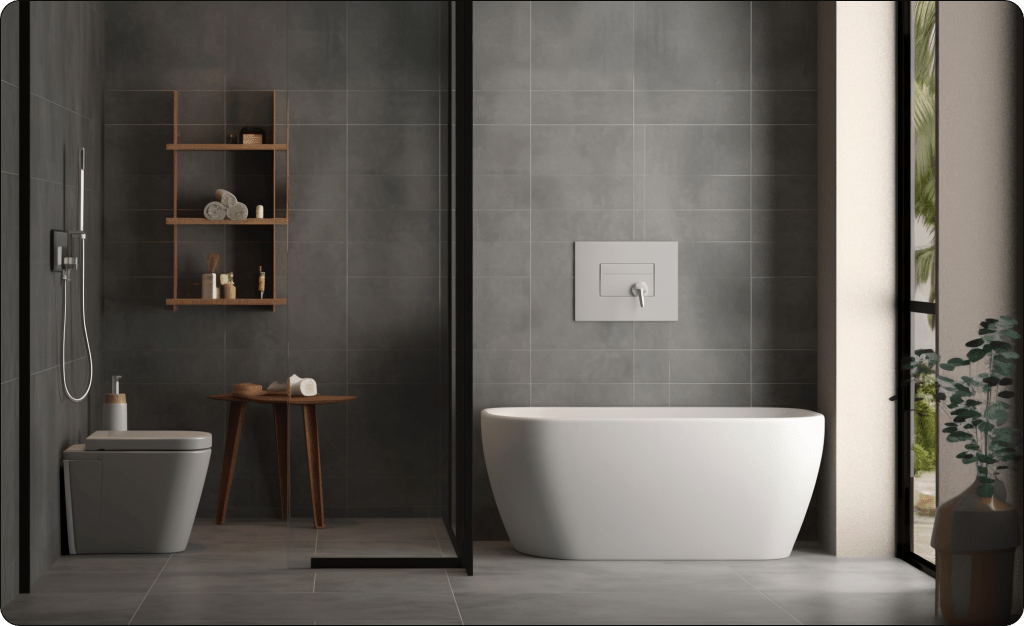
Selecting between porcelain and ceramic tiles goes beyond aesthetics; it’s about finding the perfect fit for your specific needs. Here’s a guide to help you navigate through various use cases and make informed decisions based on your unique requirements, considering porcelain and ceramic differences.
-
High-Traffic Areas:
- Recommended: Porcelain Tile
- Why: Porcelain’s durability and resistance to heavy foot traffic make it ideal for busy areas like entryways, hallways, and commercial spaces.
-
Moisture-Prone Spaces:
- Recommended: Porcelain Tile
- Why: Porcelain’s low water absorption rates and resilience against moisture make it perfect for bathrooms, kitchens, and outdoor spaces where exposure to water is frequent.
-
Budget-Friendly Projects:
- Recommended: Ceramic Tile
- Why: If you’re working on a budget-conscious project, ceramic tiles offer a cost-effective solution without compromising on style.
-
Design Versatility:
- Recommended: Both Porcelain and Ceramic Tile
- Why: Both options provide an extensive range of colors, patterns, sizes, and finishes. Choose based on your specific aesthetic preferences and the style you want to achieve.
-
DIY-Friendly Installation:
- Recommended: Ceramic Tile
- Why: Ceramic tiles are lighter and generally easier to handle, making them more suitable for DIY enthusiasts. However, if you have some experience, porcelain tiles can also be tackled with care.
-
Outdoor Spaces:
- Recommended: Porcelain Tile
- Why: Porcelain’s durability and resistance to moisture make it an excellent choice for patios, decks, and other outdoor areas.
-
Customization and Unique Designs:
- Recommended: Both Porcelain and Ceramic Tile
- Why: Both options offer a wide array of design possibilities. Choose based on the specific colors, patterns, and finishes that align with your vision.
-
Long-Term Investment:
- Recommended: Porcelain Tile
- Why: While porcelain may have a higher upfront cost, its durability and longevity make it a worthwhile long-term investment, potentially saving on replacement costs over time.
-
Moderate Foot Traffic Areas:
- Recommended: Ceramic Tile
- Why: For spaces with moderate foot traffic, such as bedrooms or less frequented living areas, ceramic tiles offer a stylish and budget-friendly solution.
-
Ease of Maintenance:
- Recommended: Both Porcelain and Ceramic Tile
- Why: Both options are relatively easy to maintain. Regular cleaning, grout care, and prompt spill cleanup contribute to the longevity of both porcelain and ceramic tiles.
Tips for Buying and Installation.
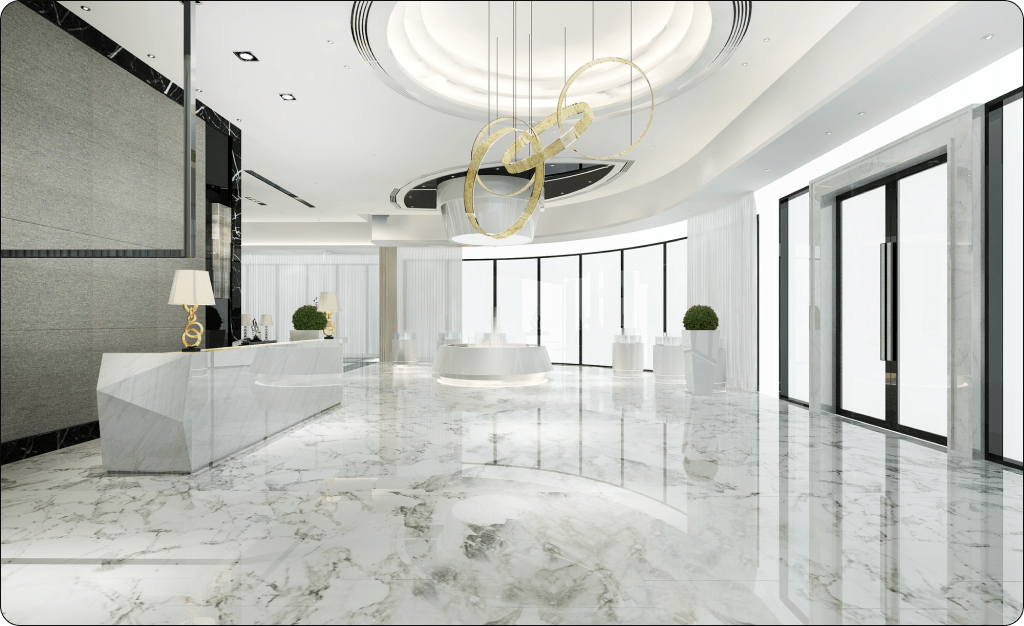
Selecting between porcelain and ceramic tiles is not the only decision to be made when starting a tile project. When choosing and buying your tiles, keep the following in mind to ensure a good result and a seamless installation process:
Measure and Plan Thoroughly:
Before purchasing, accurately measure the area where the tiles will be installed. Add a 10% overage for cuts and potential breakages. A well-thought-out plan helps avoid unnecessary complications during installation.
Consider Tile Size and Layout:
Larger tiles can make a space appear more expansive, while smaller tiles may require more grout and provide additional slip resistance. Experiment with different layouts on paper before making a final decision.
Check Color Consistency:
If color consistency is crucial for your project, purchase tiles from the same production lot to ensure uniformity. Variations can occur between different lots.
Research Installation Materials:
Ensure you have the right materials for installation, including adhesives, grout, and sealants. Follow the manufacturer’s recommendations for these materials to guarantee a successful and long-lasting installation.
Choose the Right Adhesive:
Different tiles may require different adhesives. Porcelain tiles often benefit from thin-set mortar, while ceramic tiles might work well with a standard adhesive. Consult with the manufacturer or a professional for guidance.
Acclimate Tiles Before Installation:
Allow the tiles to acclimate to the room’s temperature and humidity for at least 24 to 48 hours before installation. This helps prevent issues like warping after installation.
Invest in Quality Tools:
Quality tools make a significant difference in the installation process. Invest in tile spacers, a tile cutter, a level, and a rubber mallet to ensure precision and efficiency.
Plan for Expansion Joints:
In larger tiled areas or rooms with temperature fluctuations, leave space for expansion joints to prevent cracking. Follow industry guidelines for the recommended spacing.
Seal Porous Tiles:
If you’re using porous tiles, particularly certain types of natural stone or unglazed ceramics, consider applying a sealer before grouting to prevent staining.
Follow Manufacturer Guidelines:
Always adhere to the manufacturer’s guidelines for installation, including specific recommendations for subfloor preparation, adhesive application, and grout curing times.
Consider Professional Installation:
While DIY projects are rewarding, complex installations, especially with porcelain tiles, may benefit from professional expertise. If in doubt, consult with or hire a professional installer to ensure a flawless result.
Conclusion: Summarize key takeaways and encourage readers to assess their specific needs.
It is important to carefully analyze your specific requirements while choosing between porcelain and ceramic tiles. Despite having a somewhat higher initial cost, porcelain tiles are extremely durable and hence perfect for high-traffic and moisture-prone locations. For modest foot traffic, ceramic tiles provide DIY appeal, timeless charm, and affordability.
Key takeaways include meticulous planning, understanding tile ratings, and following installation guidelines. Both options provide design flexibility, so explore a diverse range based on your preferences.
Ready for your tile project? Explore a variety of porcelain and ceramic tiles that align with your style and needs.
